October 26, 2020
By Ian Rand, assistant director of marketing, communications + special projects
"The only way to insure President Roosevelt's 'Four Freedoms' today is through our Freedom to Vote. Without exercising our responsibility, everything is in jeopardy. As Norman Rockwell's posters reminded us of these 'Four Freedoms,' our designers remind us that the fifth holds everything together."
– Thoughts on Democracy: Freedom to Vote 2016 guest curator Steven Heller, designer and author
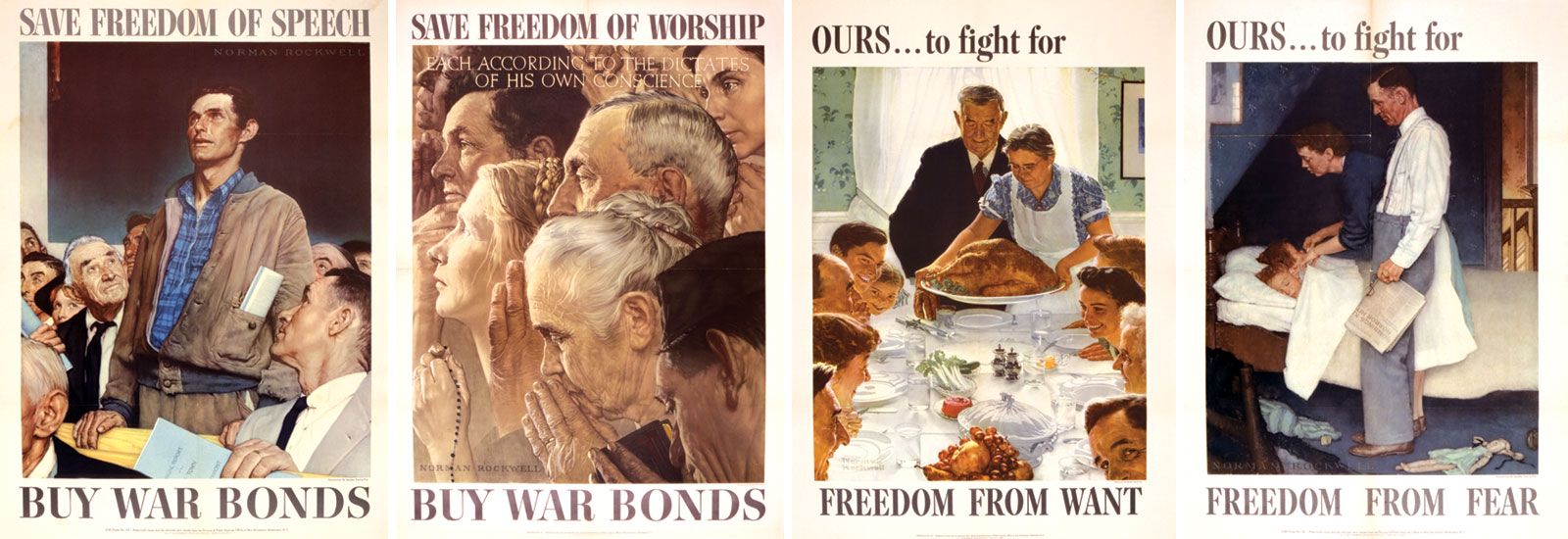
A gift to The Wolfsonian from collector and philanthropist Leonard Lauder, Norman Rockwell's instantly recognizable Four Freedoms posters conjure up a kinder, gentler America. Portraying an idealized society, Franklin Delano Roosevelt's "four essential human freedoms" represented our core aspirations: freedom of speech; freedom of worship; freedom from want; and freedom from fear.
So how do we benchmark ourselves today?
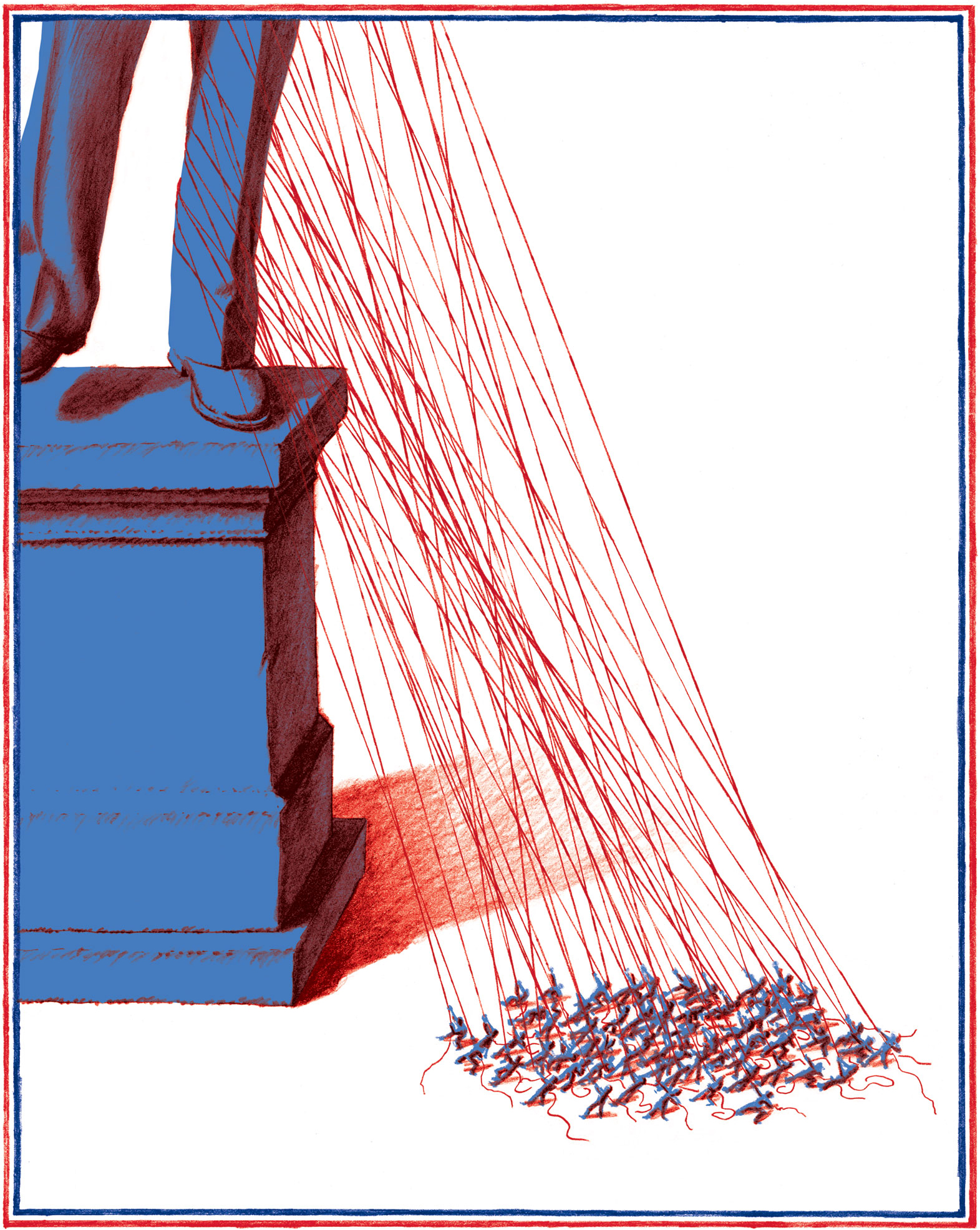
Poster, Freedom to Vote (and make it count), 2016. Mirko Ilić, designer.
Artist statement: "The poster illustrates the freedom to vote (and make it count). In the past there have been quite a few examples when an election is won with only a few extra votes.
I wanted to show through the poster that in a democracy, no matter how weak and insignificant one's vote seems, it can be the tipping point to bring the power down."
This year, it seems as if everything has gone to hell. So much has changed that our collective heads are spinning. We're in the middle of a global pandemic, there are conflicting reports about mail-in voting, belief that the election is rigged, and evidence that Russia, China, and Iran are all meddling in, monkeying with, and messing up our election. "These are unprecedented times," we cry out. Our sources of trusted news and the information they convey swing in wildly different directions. And protests and riots have rocked our cities and streets, further exacerbating our polarized politics; some see them as expressions of democracy in action, and to others they're proof of lawlessness on the rise. If trying to get your head around all of this makes you dizzy, you're not alone; I'm dizzy just typing it.
But one thing isn't new: the anxiety, and hope, that surrounds elections. Four years ago, The Wolfsonian mounted an installation, Thoughts on Democracy: Freedom to Vote 2016, based on an exhibition eight years earlier, Thoughts on Democracy. As we move into the final days before November 3, we thought it a good moment to revisit the artist commissions produced the last time we entered polling booths to decide a presidential race.
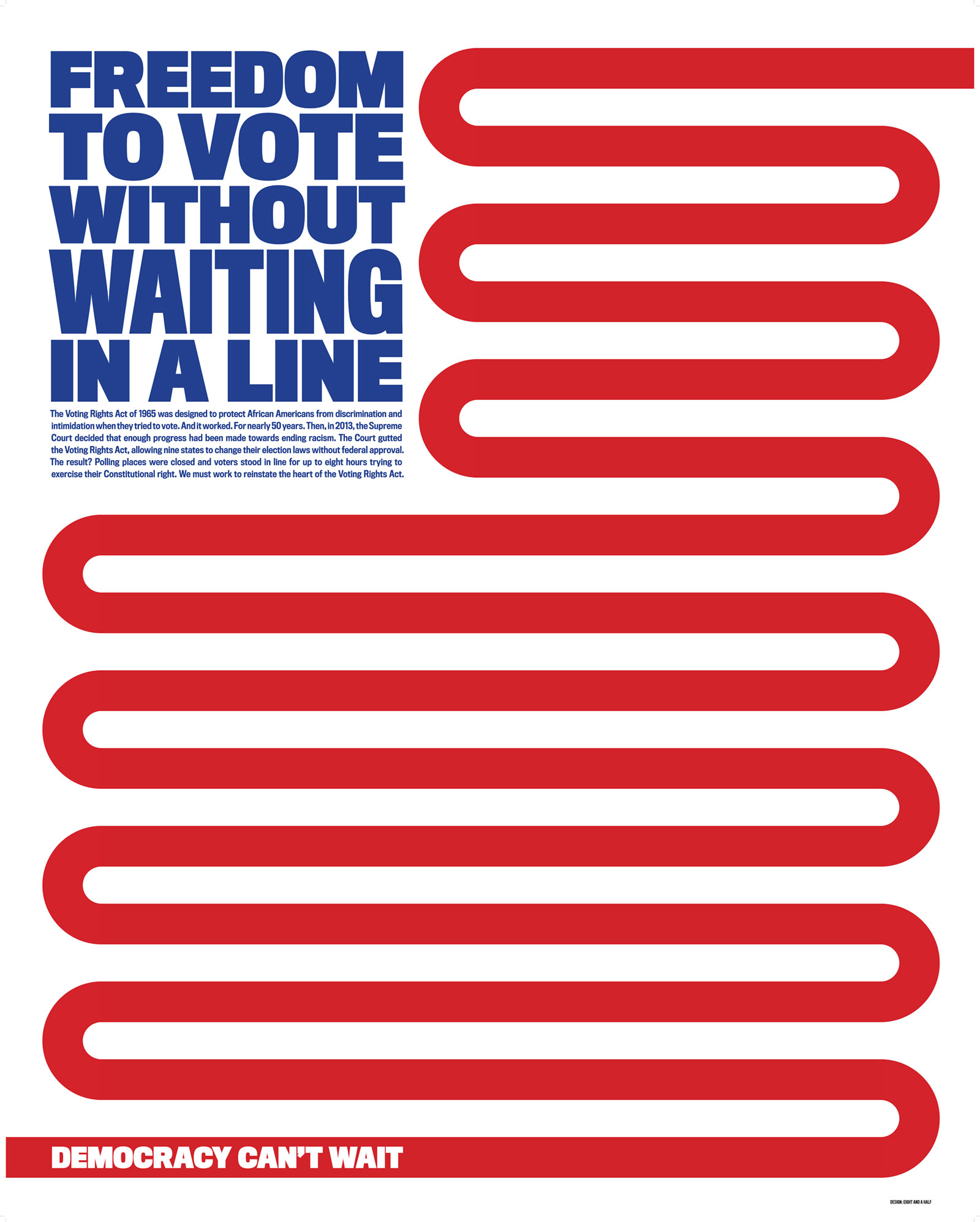
Poster, Freedom to Vote (and not wait in a line), 2016. Bonnie Siegler, Eight and a Half, designer.
Artist statement: "I consider the closing of polling places, the reduction of operating hours, and the manipulation of districts through gerrymandering as crimes against America. The Voting Rights Act was one of the only defenses we had against such insanity and even that wasn’t enough protection. Now that the Supreme Court has changed the Voting Rights Act, it is crucial that we work together to demand a full reinstatement and, ideally, further protections. This poster symbolizes the way our democracy has been manipulated to interfere with the Equal Protection Clause, creating lines and long waits that make it almost impossible for many Americans to vote, by reworking the lines on our flag to represent our new reality."
Both Thoughts on Democracy shows engaged contemporary artists and designers in reinterpreting Norman Rockwell's series of paintings-turned-posters. While the 2008 version featured work that responded to the full spectrum of the American experience, in 2016 the participants centered their focus on a foundational freedom: the freedom to vote. Mirko Ilić, Oliver Munday, Paul Sahre, and Bonnie Siegler each created a graphic response to the chaos and obstacles inherent in the American voting process, regardless of party affiliation or political beliefs. Four years later, their posters remain powerful reminders of the rights we exercise in a democratic system—however critical they are of its flaws.
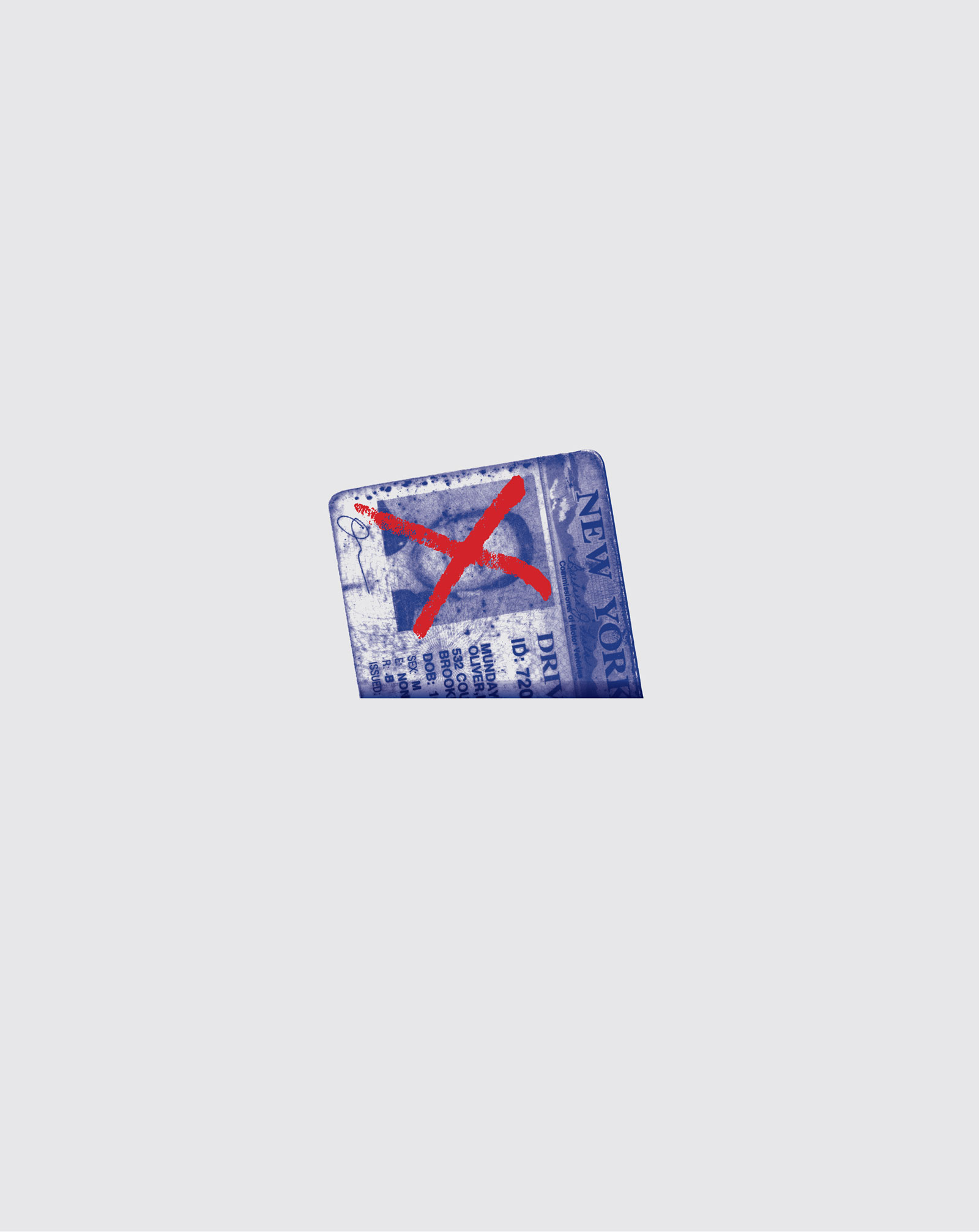
Poster, Freedom to Vote (and not require ID), 2016. Oliver Munday, designer.
Artist statement: "Voter ID laws are pretexts for oppression, and they seek to dismantle the central tenet of any democracy: the vote. This poster exploits a similarity in form shared by a ballot and an ID card, inviting multivalent readings of the role of power and control within our democracy."
So why vote, you ask? Just read the statements provided by Ilić, Munday, Sahre, and Siegler in 2016 for four expressive appeals straight from the artists. And to these, I add three of my own reasons:
Civic Duty
Sure, we all know it's our civic duty to vote. But what does that really mean?
To quote activist and journalist Ida B. Wells, "With no sacredness of the ballot, there can be no sacredness of human life itself." When we don't take part in the process—a right that for many was hard-won by past generations—we undermine the intent of America's elections to reflect the will of its citizens. Presidents wind up dealing with grave, serious matters; shouldn't we approach choosing a leader with equal responsibility?
Free Rein to Complain
Here's what you get to do after you vote: Grumble and debate (healthy discourse) for the next four years, if your candidate did not prevail. Here's what you get to do if you don't vote: nothing. If things don't go the way you hoped, no one wants to hear what you have to say. Voting is a right, but bitching, moaning, and debating is a privilege—one you can only access IF. YOU. VOTE.
It's Getting Better
We think, at least. As these 2016 posters attest, the machinery that holds up American elections is far from perfect and there's certainly room for improvement. That said, more and more attention is being paid to disenfranchisement tactics (both overt and subtle) and calls are ringing clear from all corners for every vote to count. Punch-card ballots and the hanging, dimpled, and pregnant chads that proved so problematic in the 2000 election? Gone, along with many other outdated voting methods that historically have made the process opaque, inaccessible, and untrackable. We have new fears in 2020, sure—hacking, overwhelming the U.S. Postal Service—and only time will tell as to whether we've worked out enough of the kinks to show real progress.
But we won't know until we try. As author, educator, and Congresswoman Shirley Chisholm once said, "I don't measure America by its achievement but by its potential." No matter which side of the political aisle you're on, we're sure you'll agree that it all begins with the vote. Now go cast those ballots!
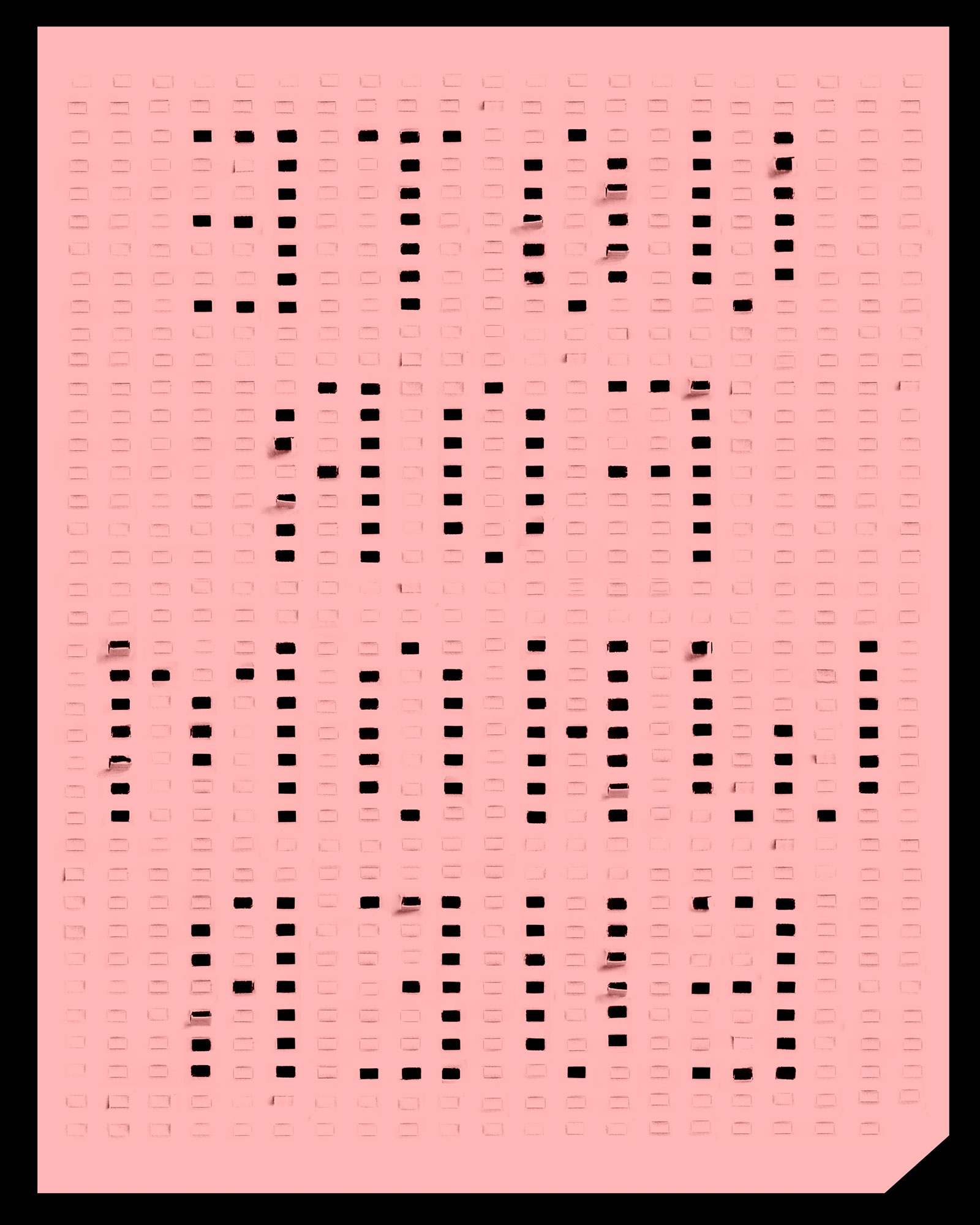
Poster, Freedom to Vote (for the candidate of your choice), 2016. Paul Sahre, designer.
Artist statement: "Even if one decides to vote for your Uncle Fred as a write-in candidate, the important thing is for everyone to exercise the right to vote.
I employed a chad-style ballot to express this idea. Seen from behind the ballot, the act of voting creates the message."
